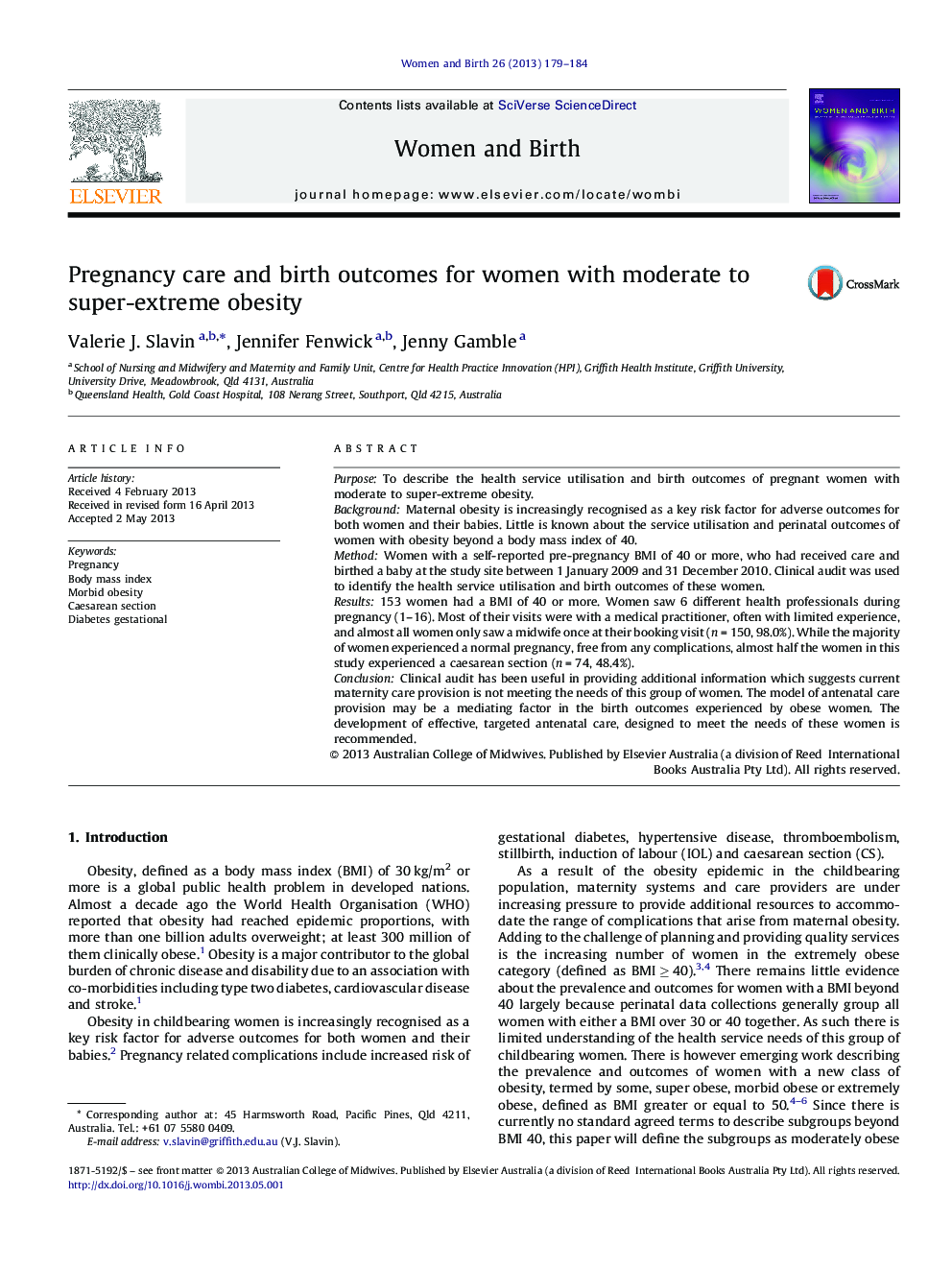| Article ID | Journal | Published Year | Pages | File Type |
|---|---|---|---|---|
| 2636019 | Women and Birth | 2013 | 6 Pages |
PurposeTo describe the health service utilisation and birth outcomes of pregnant women with moderate to super-extreme obesity.BackgroundMaternal obesity is increasingly recognised as a key risk factor for adverse outcomes for both women and their babies. Little is known about the service utilisation and perinatal outcomes of women with obesity beyond a body mass index of 40.MethodWomen with a self-reported pre-pregnancy BMI of 40 or more, who had received care and birthed a baby at the study site between 1 January 2009 and 31 December 2010. Clinical audit was used to identify the health service utilisation and birth outcomes of these women.Results153 women had a BMI of 40 or more. Women saw 6 different health professionals during pregnancy (1–16). Most of their visits were with a medical practitioner, often with limited experience, and almost all women only saw a midwife once at their booking visit (n = 150, 98.0%). While the majority of women experienced a normal pregnancy, free from any complications, almost half the women in this study experienced a caesarean section (n = 74, 48.4%).ConclusionClinical audit has been useful in providing additional information which suggests current maternity care provision is not meeting the needs of this group of women. The model of antenatal care provision may be a mediating factor in the birth outcomes experienced by obese women. The development of effective, targeted antenatal care, designed to meet the needs of these women is recommended.
